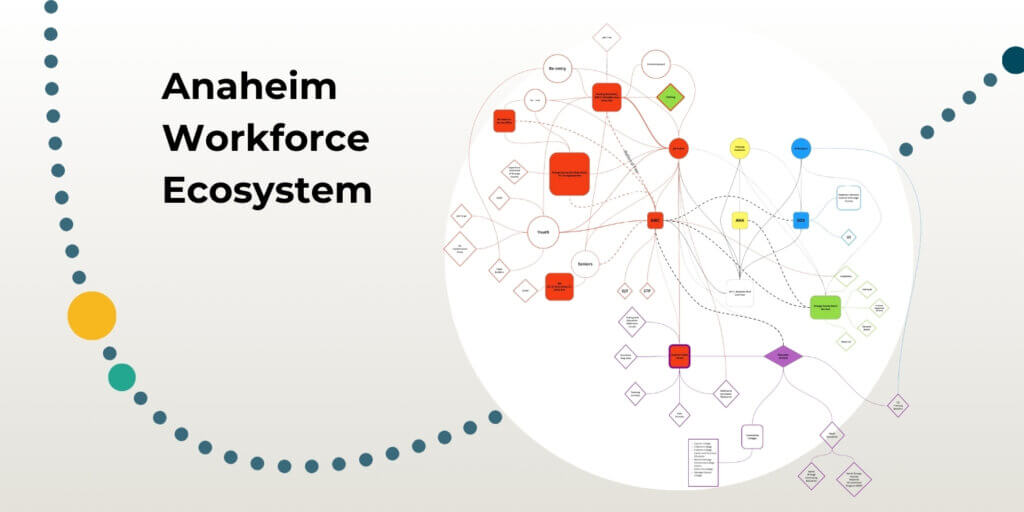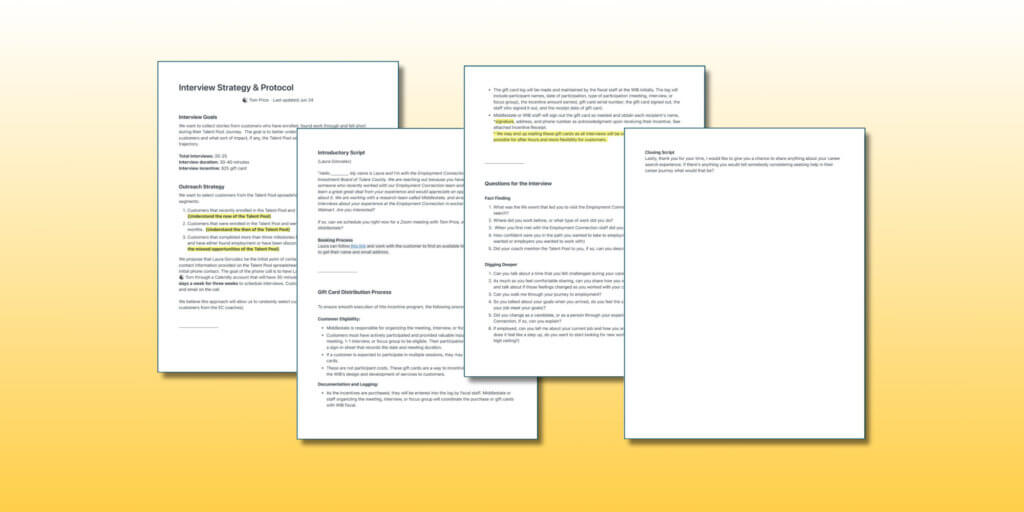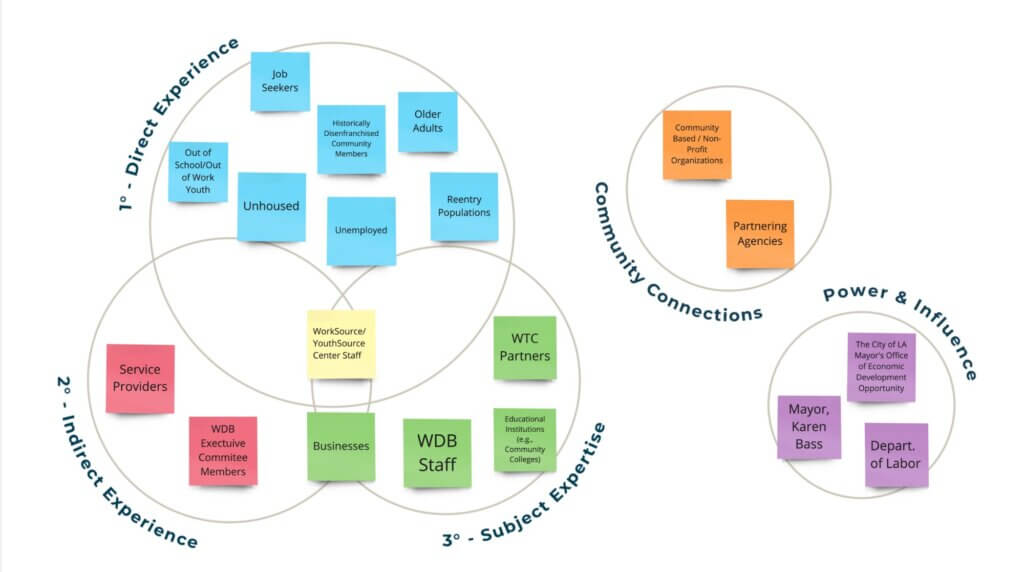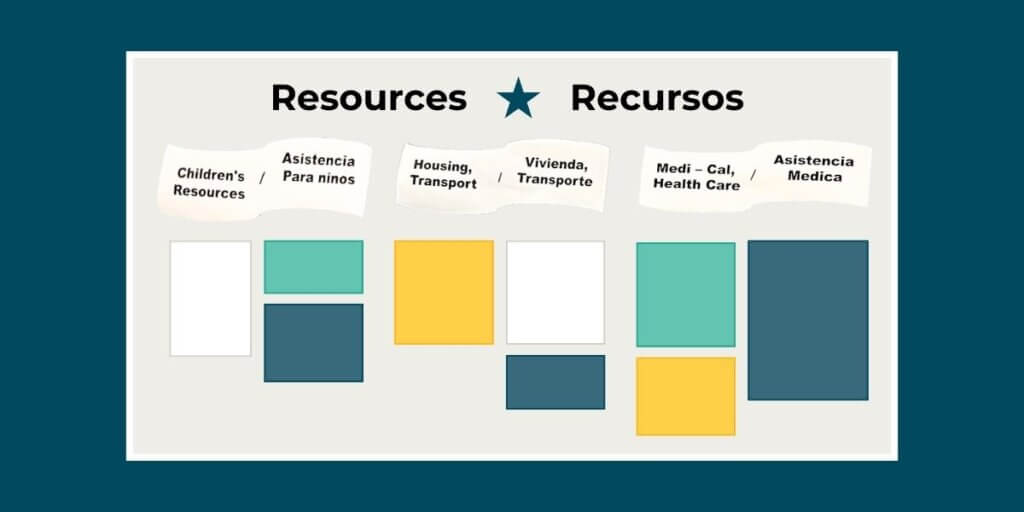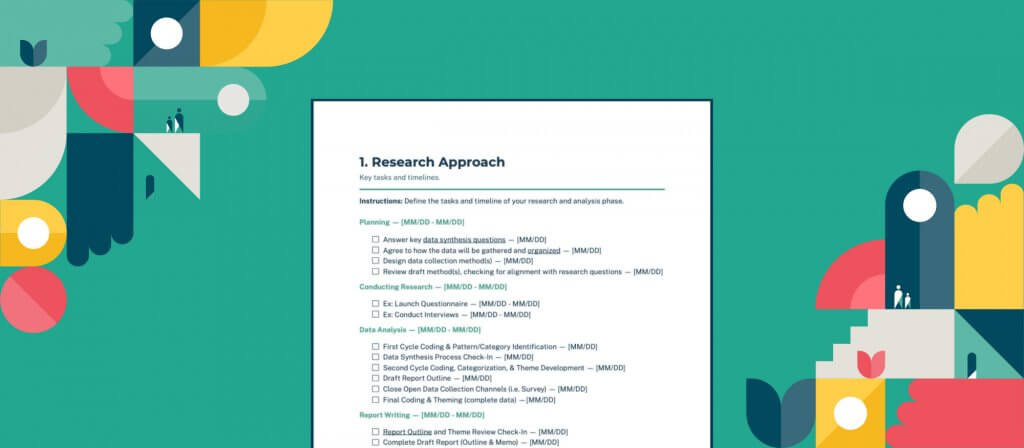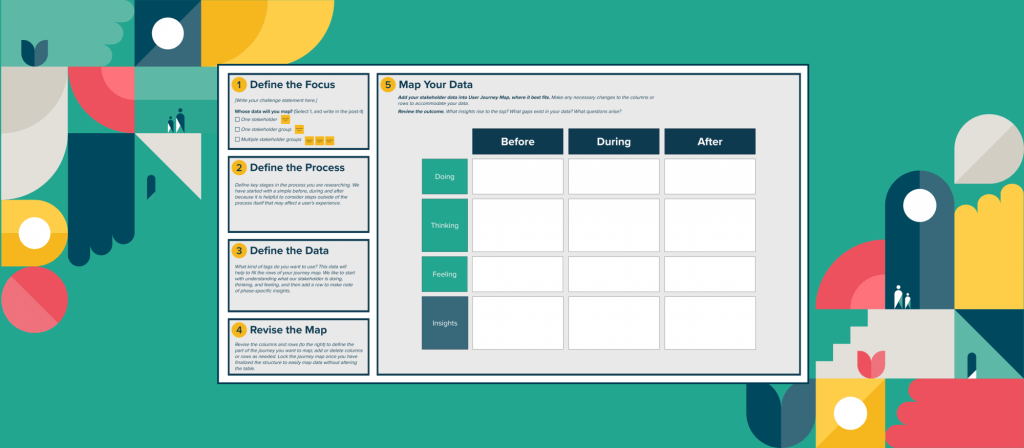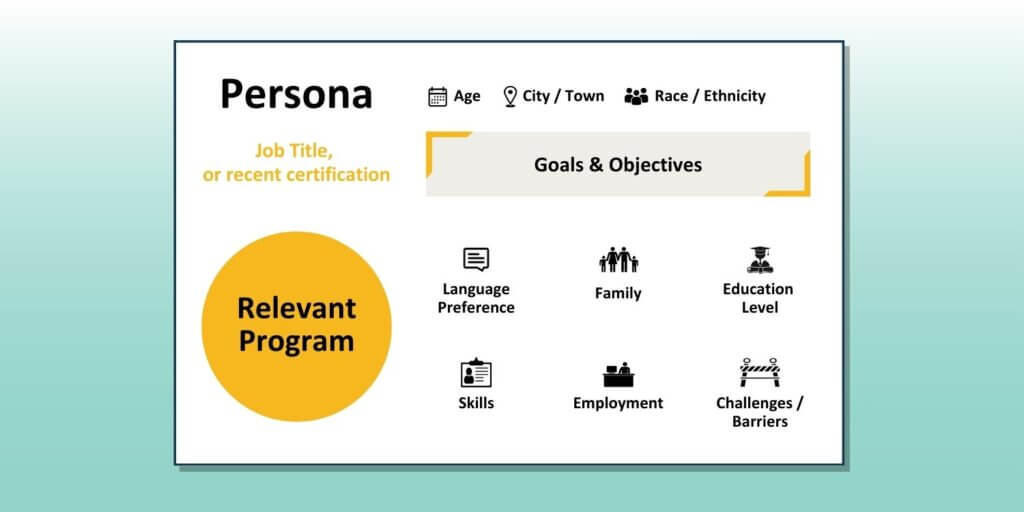resource
Ecosystem Mapping
A visual tool to understand the people, organizations, and systems shaping a problem or experience.
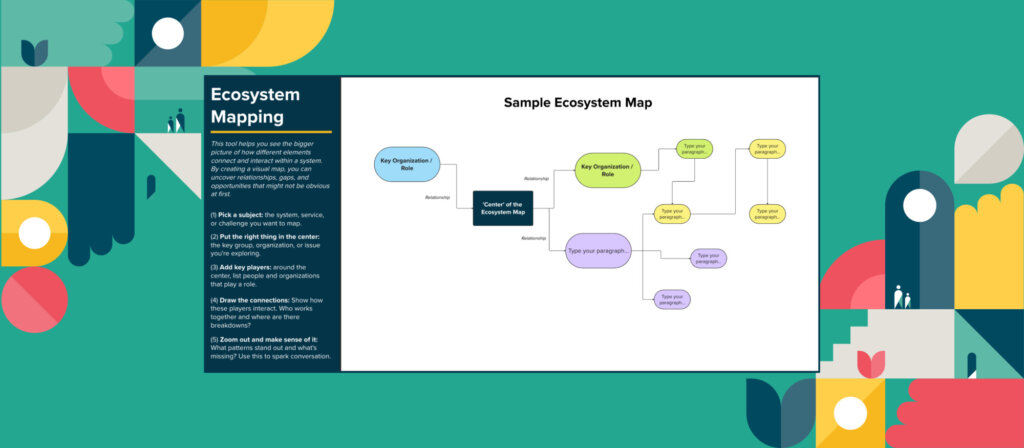
Human-centered design (HCD) is about inclusive and collaborative problem-solving.
HCD can be applied in any context where you find multiple people or groups affected by a problem. In our work, we’ve applied this approach to workforce development; benefits access; housing & homelessness; among many others!
By sharing the resources below, we offer considerations for you to structure your own human-centered research or engagement process. Think of this as a starting place – a guide – for you to adapt and apply to your own context and needs.
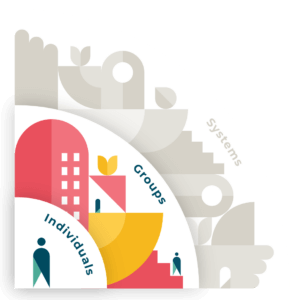
Our goal is to create practical resources for the public servants and service providers that are co-creating solutions to public challenges.
These resources – templates and case studies – are designed to be used by individuals or teams.
To be successful in the long-run, this approach also requires organizational buy-in and alignment. In partnership with Middlestate, we prototyped a Self-Assessment for California Workforce Boards to help start this conversation.
You don’t need to be an ‘expert’ in human-centered design to start incorporating some of its tools and principles. Whether you’re in discovery or implementation, you’ll work through 3 simple goals: Listen, Learn, and Make.

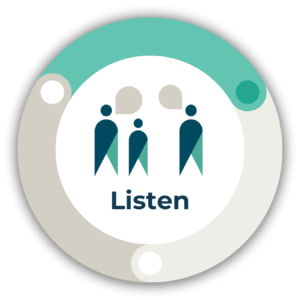
For every challenge, come in with an open mind and an inquisitive spirit. Go broad, to understand the challenge from different angles and perspectives.
Key Components:
A visual tool to understand the people, organizations, and systems shaping a problem or experience.
The CivicMakers Team led the inaugural Workforce Transformation Corps cohort, in partnership with Make Fast Studio, Jobs for the Future,…
The CivicMakers Team led the inaugural Workforce Transformation Corps cohort, in partnership with Make Fast Studio, Jobs for the Future,…
The CivicMakers Team led the inaugural Workforce Transformation Corps cohort, in partnership with Make Fast Studio, Jobs for the Future,…

Look at people’s experiences and other data sources – as a whole – to find opportunities for improvement. Make visible the multiple, intersecting systems and perspectives that affect decision-making.
Key Components:
The CivicMakers Team led the inaugural Workforce Transformation Corps cohort, in partnership with Make Fast Studio, Jobs for the Future,…
Last Updated: November, 2021 Telling a clear and defensible story with your insights is essential to transforming data into meaningful…
Last Updated: November, 2021 Think of the journey map as a glorified table that helps you map different types of…
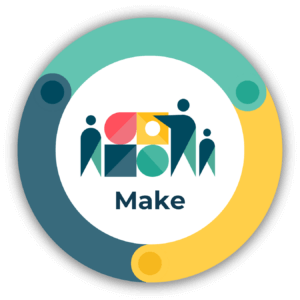
Incorporate your findings into data-informed designs. Work collaboratively to implement improvements, adjusting your approach based on the capacity and constraints of your context.
Key Components:
For continuous improvement, cycle back to ‘Listen’ and ‘Learn’ to explore the impact that changes are having on people and processes.
The CivicMakers Team led the inaugural Workforce Transformation Corps cohort, in partnership with Make Fast Studio, Jobs for the Future,…
